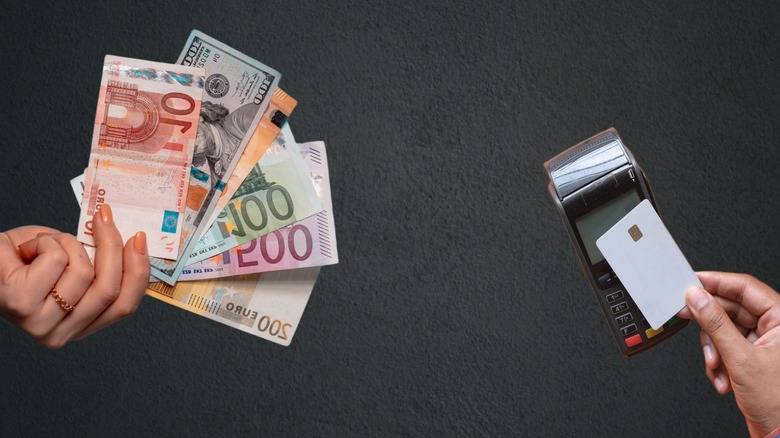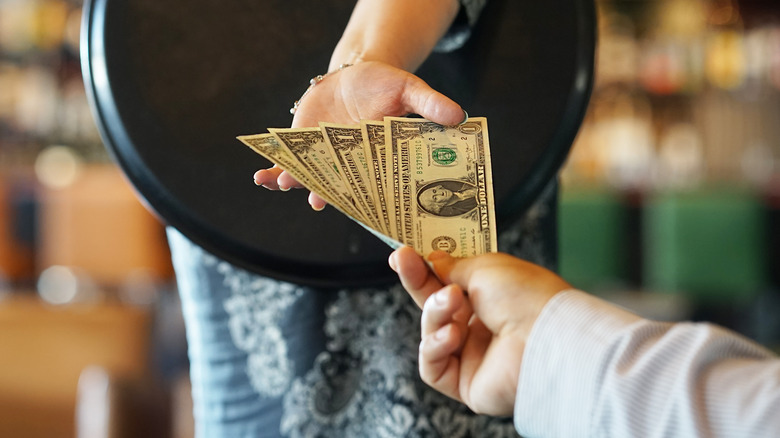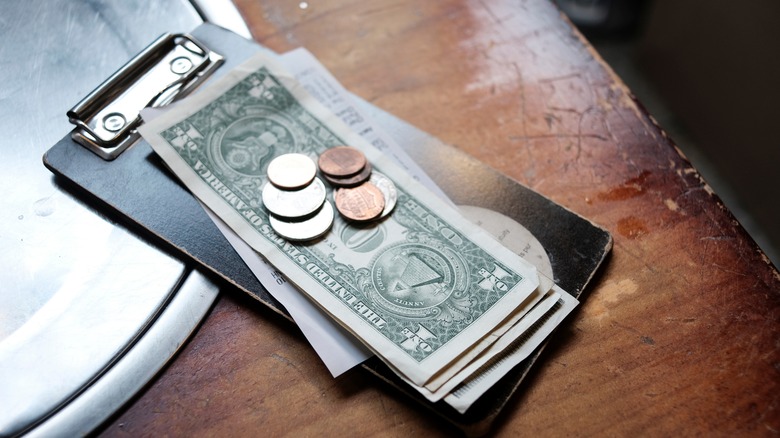Should You Tip With Cash Or Card At Restaurants? The Answer's Easy
In this age of convenience, many people don't carry cash on them anymore. Sometimes, you don't even need a physical card to pay a bill if an establishment accepts mobile point-of-sale payments. Everyone is paying with plastic these days, and settling the tab in a restaurant is no exception. But when it comes to tipping for your service in a restaurant, things can be a little confusing. You want that tip to go directly to the person who served you, so does it matter if you tip with a card, or is cash a better option?
Tipping is a practice that goes back much further than paying with plastic, and although restaurants have transitioned to 21st-century technology, some of the old ways of operating still work best. Where tipping is concerned, the tried-and-true method of tipping with cash is preferred. While you will nearly always have the option of leaving a tip at a restaurant with a card, restaurant staff generally prefer to receive cash. This is because they usually secure their money faster and sometimes even get to keep more of it for themselves.
Cash is still king
When you tip with a card, the restaurant may collect that money over a pay period and put it towards the employee's next bi-weekly paycheck. That means the generous tip you left for exceptional service may not make it to the server's hands for up to two weeks. With a cash tip, restaurant workers get their money as they bus the table or, if the restaurant pools tips, at the end of the shift. It's not uncommon for servers to depend on a certain amount of cash tipping throughout the week to manage certain living expenses.
Some restaurants also require their workforce to pay for the processing fee connected to the tip, which can be around 3%. If you were to tip $10 on a meal by card, the staff would see $9.70 of that tip. It might not seem like a significant decrease, but multiply that by every customer over a month's worth of shifts, and it starts to mean serious money; a cash tip spares them the additional tax on their labor.
Tip-sharing is commonplace in restaurants
Whereas tipping used to mean that only your server was walking out with funds in hand, this isn't the case as often today. Many establishments now split tips between their staff, meaning portions of the tip you leave with your bill will go to all the other members of the restaurant who contributed to your dining experience. If you are lucky enough to have an extra attentive employee who impresses you, they won't say no to a cash tip just for them. You can slip them whatever expression of gratitude you think is appropriate, but you don't want to exclude that from the tip you would leave on the final tab.
Whether with a card or in cash, the paramount rule of restaurant etiquette is that you leave a tip. On average, 18% to 22% of the bill is an appropriate tip for standard service. If you want to show additional appreciation for an exceptional job, 25% or more is an appreciated gesture. Before going out to experience some perfectly cooked cuisine at your favorite restaurant, stop by the ATM. Though not absolutely necessary, it is a classy move that will put more money in the hands of the staff that worked hard towards your dining experience.


